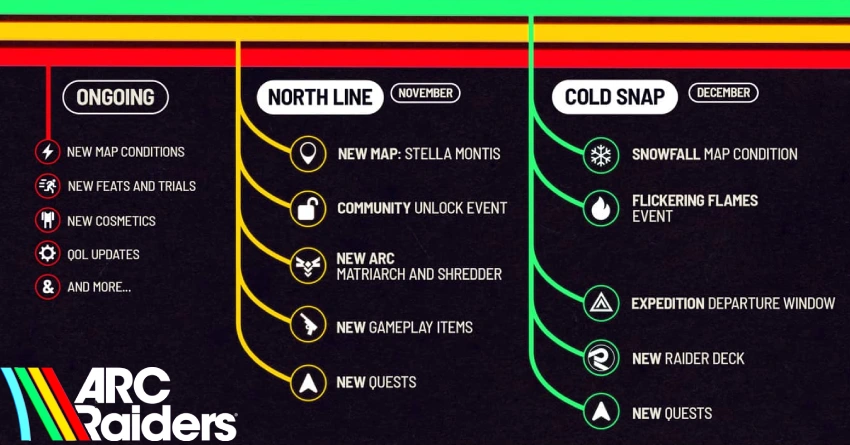When I first launched PEAK, I thought I knew what I was getting into: a beautifully stylized survival climbing game where cooperation, timing, and stamina would be key. Together with my friends, we climbed, stumbled, fell, and eventually beat the so-called "Peak" difficulty level.
We thought we had reached the pinnacle—no pun intended. But in truth, that was just the beginning.
What is PEAK?
PEAK is a co-op survival experience set in a harsh, unforgiving mountainous world. You and your teammates must scale treacherous heights, manage limited resources, withstand freezing temperatures, and contend with the brutal consequences of a single mistake. There's a lot of climbing—but not just physically. The game has a deep, layered difficulty system that tests your endurance, decision-making, and teamwork.
The game's visual style is minimalist yet beautiful. But don't let the clean art direction fool you—this game will punish you. And if you think beating the "Peak" difficulty means you've mastered the game, you're in for a surprise.
Conquering Peak – And Discovering the Ascents
After many hours of gameplay, countless retries, and plenty of yelling over voice chat, my friends and I finally beat the Peak difficulty. It felt like we had reached the summit—until we realized there were seven more levels of challenge ahead of us.
The game introduces these more challenging modes, known as Ascents, and each one adds additional challenges on top of the base game.
Here's a breakdown of all the primary difficulty tiers in PEAK:
Tenderfoot
This is the entry-level difficulty. It's much more forgiving, with slower hunger, gentler stamina drains, and no time pressure. Perfect for learning the ropes (literally). But once you're ready for the real climb, it's time to move on.
Peak
This is the game's standard difficulty. Here, things get serious. You have limited supplies and more challenging terrain, making survival a central concern. When we completed this, we truly felt like we had beaten the game.
But then came the Ascents.
The Ascent Difficulties – Climbing Into Madness
Each Ascent difficulty builds upon the previous one, stacking modifiers that force you to rethink your strategies completely. Here's a detailed look at what they add:
- Ascent 1 – Fall Damage Increased: Suddenly, a simple slip becomes a serious injury. You can no longer rush or improvise your routes. Every step must be calculated.
- Ascent 2 – Hunger Accelerates: Now, your food consumption becomes critical. You must find or bring enough food to survive, and hunger management becomes a top priority.
- Ascent 3 – Increased Item Weight: You can no longer carry everything you want. Players must now coordinate inventory: one hauls rope, another carries food, and someone else sacrifices mobility for tools.
- Ascent 4 – No More Flares on Peak: Flares are removed from the mountaintop. This adds a strategic layer—you must plan your supply runs around available camps or drop zones.
- Ascent 5 – Cold Debuff at Night: Temperature becomes your silent enemy. If you don't build fires or find warmth, your stats begin to decay. You're not just fighting the mountain anymore—you're fighting time and weather.
- Ascent 6 – Stamina Costs Increase: Every climb now drains you faster. Planning rope usage, resting intervals, and support roles become crucial for success. Mistakes aren't just inconvenient—they're deadly.
- Ascent 7 – Permadeath Mode: The ultimate test: one death, and it's over. No revives, no resets. You fail, you restart. This is the mode only the boldest dare to attempt.
From Cooperation to Survival Planning
When we started PEAK, communication meant helping each other over gaps or spotting paths. But once we hit the higher Ascents, that changed. Suddenly, we were:
- Assigning Roles – Someone scouts ahead, someone stays near the fire, and someone watches hunger meters.
- Coordinating Supplies – Who carries flares? Who brings food? Who's on fire duty?
- Timing Everything – Climbing at night without warmth is a death sentence. You have to plan routes and rest stops like a genuine expedition.
The sense of immersion becomes so intense that you forget you're playing a game. You're surviving, and that's a much deeper experience.
Why Peak Is Just the Start
Yes, I beat the Peak difficulty with my friends. And yes, we celebrated like we had just scaled Everest. But now, having seen what lies beyond—the layered hell that is Ascent 7—we realize: "Peak" isn't the summit. It's the base camp.
The actual game is in the Ascent modes. That's where PEAK transforms from a survival co-op game into a ruthless test of strategy, resilience, and trust.
What Keeps Us Coming Back
Even after dozens of runs, we still find ourselves coming back. Each attempt feels new:
- The terrain remains familiar, but the conditions change.
- Randomized item drops, weather shifts, and nightfall mechanics keep us on edge.
- No two runs are the same, especially in the higher Ascents.
We've failed more than we've succeeded—but when we do succeed, the feeling is unmatched.



